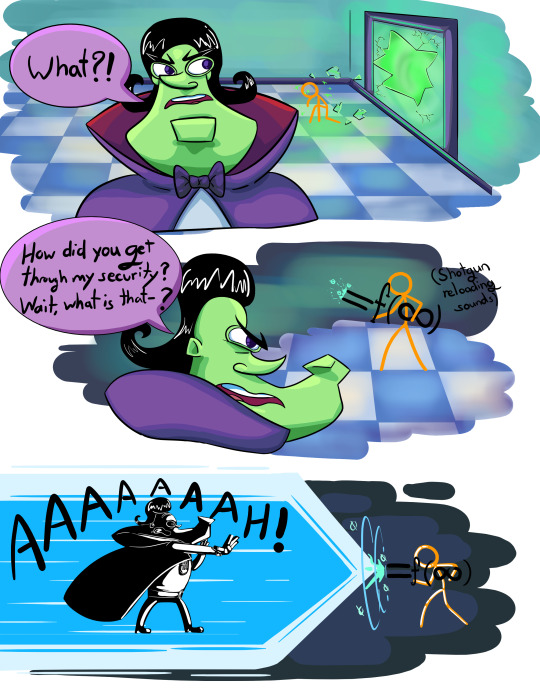#kinetic theory
Photo

Ludwig Boltzmann was born on February 20, 1844. An Austrian physicist and philosopher, his greatest achievements were the development of statistical mechanics, and the statistical explanation of the second law of thermodynamics. In 1877 he provided the current definition of entropy. Max Planck named the constant kB the Boltzmann constant. Boltzmann's most important scientific contributions were in kinetic theory, including for motivating the Maxwell–Boltzmann distribution as a description of molecular speeds in a gas. Maxwell–Boltzmann statistics and the Boltzmann distribution remain central in the foundations of classical statistical mechanics.
#ludwig boltzmann#entropy#physics#statistical mechanics#boltzmann constant#kinetic theory#statistics#science#science history#science birthdays#on this day#on this day in science history
1 note
·
View note
Text
Experiment 2.1: Linear expansion of Solids
The increase in the length of a body resulting from being heated is known as “linear expansion”, the increase in area is known as “area (superficial) expansion”. And the increase in volume as “cubical expansion”
Generally, when heat is supplied to a body, the body increases in size. This increase in size occurs in all directions and is known as “expansion”. It can therefore be said that a body…
0 notes
Text
Replaying AC6 (its like my 8th run at this point) and I'm only now beginning to wonder why lots of the AC designs you see from characters dont have a more reliable weapon in their right hand.
The only ones that come to mind that do are Rusty, Nightfall, and Iguazu (using kinetic weapons specifically) while many others opt for a more explosive option in their right hand and their main weapon in the left hand.
Some examples of that are Sulla and Volta, both opting for an explosive in the right hand and a more aggressive close-range weapon in the off hand. (Not to mention poor Ziyi who only has small grenade launchers in either hand)


Having learned a bit more about the community and older games I suspect its because many AC vets found it was better to play the game by holding the controller upside down like this

and thus would select a reliable primary for their left hand. So this strikes me as a subtle nod to the series' past, as well as a statement on the character/AC and their design theories/preferences.
#armored core#mecha#armored core 6#handler walter#augmented human c4 621#ayre#ac6#g5 iguazu#Sulla ac6#G4 Volta#headbringer#cannon head#little ziyi#rusty#nightfall#kinetic weapons#armored core theory#design theory#lore
88 notes
·
View notes
Text
hot take: Darklina's kid wouldn't be a Sun OR Shadow Summoner...
this theory goes against the regular Grisha power "inheritance" rules (if you're Grisha, one of your parents was the same type as you), but I don't care, bc neither Alina nor Aleksander were really "normal". & that shit w/Zoya & Juris still makes me salty (no spoilers though), OP ugh.
ANYWAY--
imagine the Darklina kid having the power of gravity, kinetic energy, or merzost itself (w/the harmful effects). let me explain.
gravity is unseen. stars are basically just balls of plasma held together by gravity & a lot of movements/phenomena we study concerning outer space is thanks to the gravitational pull of a star on other stuff. also, Aleks controls the unseen, in a way.
kinetic energy = movement in general. Gambit/Remy LeBeau from the X-Men (Marvel Comics) controls this, so he can make objects spontaneously combust OR slow things down. cue the ultimate form of Etherealki!!
merzost is, in short, forbidden magic that everyone finds unpredictable & costly. but Ilya Morozova had a pretty good handle on it. he was able to resurrect his daughter using it & his exposure to it altered his blood/DNA/whatever enough to give his descendants a new Grisha power (IDK why HE didn't become a Shadow Summoner). so a merzost Grisha might be an advanced Healer, able to completely resurrect & reconstitute people. maybe they could speak to spirits. tbh merzost is just witchy jurda parem.
I've seen lots of fics about the Reader being a "Star Summoner" or a "Moon Summoner"...if you use these ideas, please tag/credit me! I'd love to see your take on these--

@starlsssankt @sankta-alina-s
#admin#hot take#darklina#merzost#gravity#kinetic energy#science#grisha#small science#grishaverse#ilya morozova#aleksander morozova#alina starkov#etherealki#sun summoner#shadow summoner#fan theory#shadow and bone#shadow & bone
27 notes
·
View notes
Text










Entropy entropy entropy
2 notes
·
View notes
Text
Through shapes, colors, and the elements on their facades, many architects have sought to bring a sense of movement to works that are otherwise physically static. Santiago Calatrava, Jean Nouvel, and Frank Gehry are only a few of the masters who managed to provide a dynamic effect to motionless structures, highlighting the work in context using formal strategies borrowed from the plastic arts. In other cases, however, architects have also opted for physically kinetic structures that could bring a unique aesthetic or functional dimension to the work. Source Link.
0 notes
Text
One of the simplest models is called collision theory.
"Chemistry" 2e - Blackman, A., Bottle, S., Schmid, S., Mocerino, M., Wille, U.
0 notes
Text
Kinetic Theory of Gases
Introduction
The Kinetic Theory of Gases is a simple, yet powerful model that explains the properties of gases in terms of the motion of their constituent particles. It provides a microscopic explanation for macroscopic properties such as pressure, temperature, and volume.
Assumptions of the Kinetic Theory of Gases
Gases consist of a large number of particles (atoms or molecules) that are in…
View On WordPress
0 notes
Text
i haven't touched this mha/witcher!au in a year, but i will finally finish the first half of this chapter draft TODAY, so help me god
#swiftlet rambles#losing my marbles in the face of the sudden relief to the writer's block help#deku!wolf school witcher and his ramblijg monster theories my beloved#sorceress!ochako and kinetic magic my most beloved
0 notes
Photo

1 note
·
View note
Text



Cyberweek 2024 Day Five: Crossover
Pfft, I've been on an AvA kick recently, so I guess it's not too surprising that I chose this. On one hand, this crossover works well in theory. The stick figures are all fast, kinetic learners and really good at demonstrating their earned skills and knowledge.
On the other hand, the sheer tonal dissonance is hilarious.
#Cyberchase#Cyberweek2024#Animation vs Animator#AvA#Animation vs Math#Day Five: Crossover#Matt#Jackie#Inez#Digit#Hacker#Euler's Integer#The Second Coming#TSC#Orange AvA#One is a little kid's show about applying math and science practically and focuses on problem-solving#With very little action#The other is an online series focusing on high-octane fight scenes#Much hilarity would ensue if they were put in the blender together#Knightmare Art
325 notes
·
View notes
Note
ok but now I’m curious about what’s on the whiteboard (unless it’s just random scribbles)
[Referring to the Yan!Professor doodle]
It is indeed a genuine snippet about the Dirac Sea!
Short answer: Dirac proposed the existence of an Anti-world (Dirac Sea) containing antiparticles, a model which was later disproved. It still remains a popular Sci-Fi trope.
Long answer: Let us briefly return to the time when Schrödinger had published his famous equation which described the wave function of a particle. Many physicists asked themselves if this new mathematical formula could be formatted in a relativistic way, according to Einstein's laws.
Now, I won't go into the mathematical details, but you essentially take the time-dependent Schrödinger equation and flip it around using operators and the mass-energy equivalence. What you get, if you're curious, is the Klein-Gordon Equation. If you try to solve it, you will get a -E solution.
Basically, they hit an impasse. Combining Schrödinger's equation with Einstein's relativism resulted in a mathematical solution which suggested there's negative (kinetic) energy. Is negative energy possible? This is where Dirac comes in. He sees the numbers and proposes the following idea: that our world is a sea of particles, and there's another anti-world which contains anti-particles.
The theory was quickly discarded, as it came with too many additional issues. If such anti-particles existed, for example, their mass and gravitational force would be so massive, they should be impossible to ignore. Where were these forces?
Later, Feynman would take over and clear up the confusion. These anti-particles of negative energy merely appear to travel backwards in time, but it's a mathematical trick which can be quickly "fixed" using CPT symmetry. An electron with negative energy traveling from A to B is really just a positron with positive energy that goes from B to A.
While Dirac's Sea turned out to be false, it was a massive source of inspiration for science fiction and fantasy. Surely you must've seen the trope of evil/opposite self from an alternate world. This is where it stems from.
54 notes
·
View notes
Text

SCIENCE ID PACK

NAMES ⌇ acid. ada. alkali. amadeo. archaea. argon. atlas. atom. atomielle. atomiene. beryl. beryllium. billy. bon. boron. cadmium. caesium. cal. carson. catalyst. cecile. cell. celle. celline. charles. chem. chemesse. chemise. chemisette. chemist. chemistrine. chrome. claude. clumselle. cobalt. comet. copper. cosmic. curt. cypher. darwin. data. decora. dex. dexter. doc. doppler. edison. edward. egbert. elara. electra. element. ellie. enoxaparin. entropy. ester. ether. euclid. evo. evoliene. evoliette. evolune. experi. experielle. experiette. experimae. foggy. galileo. gamma. gibson. gizmo. gorgon. graham. graviette. gravitae. gravitine. halogen. hatchet. hazard. helix. henry. herbert. hypatia. ion. irvin. jekyll. julius. jupiter. kelvin. lab. lavoisier. lobotelle. logy. lumen. lymphoid. magnesium. magnus. mandi. mandible. marina. marrow. matter. medusa. mercury. millie. molly. monoxide. moon. neon. neuralgia. newton. nightingale.abacus. opaque. organelle. osmos. otto. ox. patchy. pathogenica. pearl. phosphorous. plasma. plasticulla. positron. posy. psych. psyche. psychielle. psychiette. quark. radia. radiatien. radiette. raymond. rocket. sagan. saturn. sci. science. sciencia. scieniette. scientist. selenium. silicona. solar. spectra. spore. staurozoa. tech. tesla. theorie. thomas. toxin. trojan. troubleshoot. valence. venus. victor. violet. volt. xen. zeke. zinc.

PRONOUNS ⌇ ?/?. abyss/abyss. acid/acid. actin/actinide. ae/atom. atom/atom. atomic/atomical. base/base. bea/beaker. beaker/beaker. beam/beam. bi/bio. bio/bio. bio/biochem. bio/biology. biology/biology. bone/bone. bub/bubble. bubs/bubble. catalyst/catalyst. ce/cell. cell/cell. che/chemistry. chem/chem. chem/chemical. chem/chemistry. chemical/chemical. chromosome/chromosome. da/data. danger/danger. data/data. decay/decay. dna/dna. e/evo. ele/element. elec/electric. elec/electron. electro/electro. electron/electron. entropy/entropy. enzyme. evo/evolve. evolution/evolution. evolve/evolve. ex/expert. exa/examine. exp/experiment. expe/experiment. experi/experi. explode/explode. fe/iron. fizz/fizz. flask/flask. geni/genius. glass/glass. goggle/goggle. gra/gravity. grav/gravity. halo/halogens. haz/hazard. hyp/sin. hypo/hypothesis. ion/ion. ion/ionization. iso/isotopic. isotope/isotope. kinetic/kinetic. know/knowledge. la/lab. lab/lab. mad/mad. magnet/magnet. mal/mal. mars/mar. mask/mask. merc/mercurys. met/metal. metal/metaloide. method/method. mi/microbe. min/mind. mol/molecule. mutant/mutant. mutate/mutate. needle/needle. neu/neucleus. neu/neutron. neuron/neuron. neutron/neutron. nu/nuclear. nucle/nucleus. nuclear/nuclear. nucleus/nuclei. orbit/orbit. organism/organism. pa/paradox. para/paradox. patch/patch. photon/photon. planet/planet. plant/plant. plat/platinum. poi/poison. pro/proton. pro/protron. psy/psycho. rad/radiation. radio/radiograph. rae/radiation. ribo/ribosome. rna/dna. sci/sci. sci/science. scien/scien. script/script. sick/sickness. spark/spark. spill/spill. star/star. study/study. subject/subject. tech/technician. test/test. theo/theory. theory/theory. tissue/tissue. tox/toxic. tri/trial. value/value. vi/viru. vial/vial. volt/volt. wave/wave. x-ray/x-ray. xyr/xyr. zip/zap. ⚗️/⚗️. 🔬/🔬. 🥼/🥼. 🧪/🧪. 🧫/🧫. 🧬/🧬. 🧮/🧮.

#⭐️lists#id pack#npt#name suggestions#name ideas#name list#pronoun suggestions#pronoun ideas#pronoun list#neopronouns#nounself#emojiself#sciencekin#scientistkin#mad scientist
127 notes
·
View notes
Text

#amphetamines salts#adhd#dopamine deficiency#small molecules heal#small molecules treat#small molecules obey kinetic theory#first order#pseudo first order#unclear#reorganization energy#molecular docking#hemmet equation#logP#she gets her meds#prescription medication#nazis prefer flushing
0 notes
Text
In the tanks where Tessla is dismembered, in Trigun Stampede, we can see the show focus on 3 parts of her :
An arm
Her guts
An eye
My conspiracy theory is they've been used for experimentations on some of the Guns, more specifically :
Legato, with his strange kinetic arm
Wolfwood, who ingest vials
Elendira, and her 'Eye of Michael'
#trigun#tristamp#wolfwood#Trigun Tesla#legato bluesummers#elendira the crimsonnail#trigun stampede#I'm still tryin' to work the symbolism and meaning behind those fleshy symbols
98 notes
·
View notes
Text
Energy Explained in Other Systems
There is a lack of measurable evidence because any person that has worked with energies have had different experiences but were able to understand and manipulate energies according to their own will.
Energy has been used in many ways within culture and religion and have set beliefs depending on the system being practiced.
Next, are some given definitions defining energies within diverse philosophies.
Hindu = Prana
Chinese = Qi /Chi
Japanese =Ki
Greek = Pneuma
Hawaiian = Mana
Tibetan Buddhism = Lung
Hindu Philosophy
A Sanskrit word for "life force" or "vital principle" is often referred to as Prana. It is described as first coming down from the Sun and connecting all elements of the Universe. It has been invoked within the Hindu scriptures of the Vedas and Upanishads.
Prana is the belief of vitality surrounding all living beings. This energy is responsible for all bodily functions. There are five types of pranas, collectively known as the five vāyus.
1. Prāṇa: Beating of the heart and breathing. Prana enters the body through the breath and is sent to every cell through the circulatory system.
2. Apāna: Elimination of waste products from the body through the lungs and excretory systems.
3.Uḍāna: Sound production through the vocal apparatus. It represents the conscious energy required to produce the vocal sounds corresponding to the intent.
4. Samāna: Food digestions, repair or manufacture of new cells and growth, and heat regulations throughout the body.
5. Vyāna: The energy that is needed for the body to have proper circulation, and the functions for the voluntary muscular system in which there is expansion and contraction processes throughout the body.
Chinese Philosophy
The earliest texts in which Qi or Chi is described was in 'Analects of Confucius' where it could mean "breath" and was combined with the Chinese word for blood.
Xue-qi, "blood and breath."
Living beings are born because of an accumulation of qi, and as the beings live out their lives the qi declines eventually resulting in death. This indicates that xue-qi referred to all living things, but it is believed that qi or chi exists within all things tangible.
For example, the wind is the qi or chi to the Earth, and the cosmic concepts of yin and yang are "the greatest of qi"
Yin and Yang which means "bright-dark," and "positive-negative" are the opposing forces needed in order to complement the concept of balance. There are thoughts that this duality symbolizes contradicting energy forces which manifest as light and dark, fire and water, expansion, and contraction. With this said, Chinese medicine states that the balance of negative and positive forms in the body are believed to be essential for overall satisfactory health.
Japanese Mythology
During the sixth and seventh centuries the Chinese word qi (or chi) was written using the same kanji script for their interpretation for energy being "Ki"
However, the meanings are a tad different.
While the Chinese use chi or qi to describe that energy exists in all things, animate and inanimate objects, the Japanese believe it is the creative flow and expressions used within our daily lives, martial arts, and symbolizes aspects of nature, and thusly the spirits. It is the transfer from living, animate beings in to inanimate which can change and manifest into various forms. It is the necessary intentions one wields.
Greek Mythology
Pneuma, "The breath of life" or "vital spirit" is composed of kinetic energies within the vessel, while Ignis is composed of thermal energies. All human beings need both kinetic and thermal energies in order to properly function.
In Greek medicine, pneuma is the form of circulation throughout the body's vital organs. Due to this the role, pneuma plays within the body to sustain consciousness. Some physiological theories suggest that the pneuma mediates between the heart, and the heart is regarded as the seat of the mind, and the brain.
In similar, Stoic philosophy, pneuma is the active and generative principles that are organized between the individual and the cosmos. The highest forms are the Gods, and the human soul. The human soul is believed to be fragments of the gods given life force in order to be born and given a vessel upon the physical plane. This exists within all animate and inanimate objects as energy transfers and changes.
Hawaiian Mythology
Mana, the spiritual energy of power and strength. This energy exists within places and people; however, it is said that mana is both external and internal concepts.
The Hawaiian people believe that individuals can gain mana or lose it depending on one's actions in everything that they do.
In mythology there were two ways to gain mana, and this was either done sexually or through violence.
To sexually gain mana one must invoke the god, Lono, deity of peace and fertility.
To gain mana through violence one must invoke the god Ku, deity of war and politics.
Tibetan Buddhism
Lung means the wind or breath. Exists as a key concept in Vajrayana traditions. Generally, it's concept relates to the understanding of the subtle body, and Three Vajras. Those three are the body, speech, and mind. Lung relates to the subtle flow of energy and the five elements. (Fire, Water, Earth, Space, and Air) Lung is mostly closely connected to the Air Element.
Lung has also been used to describe the winds or prana being used in conjunction with the subtle body during a time of exercise, but also more importantly everyday functions of the body and its own senses. There are five psychic winds which manifest into mahabhuta. These five relate to the lifeforce that animate the body-mind (namarupa) of all sentient beings.
The Five Root or Major Winds
The root winds support an element and is responsible for a function of the human body.
The 'life-supporting wind' (Tib. སྲོག་འཛིན་རླུང་, sok dzin lung; Wyl. srog 'dzin rlung).
Located in the brain, this lung regulates functions such as swallowing, inhalation, and concentration.
The 'upward-moving wind' (Tib. གྱེན་རྒྱུ་རླུང་, gyengyu lung; Wyl. gyen rgyu rlung).
Located in the chest and thorax, this lung regulates, among other things, speech, the body's energy and vitality, memory, mental endeavour and diligence.
The 'all-pervading wind' (Tib. ཁྱབ་བྱེད་རླུང་, khyap ché lung; Wyl. khyab byed rlung). Residing in the heart, this lung controls all the motor activities of the body.
The 'fire-accompanying wind' (Tib. མེ་མཉམ་གནས་རླུང་, me nyam né lung; Wyl. me mnyam gnas rlung). Found in the stomach and abdomen area, the fire-accompanying wind regulates digestion and metabolism.
The 'downward-clearing wind' (Tib. ཐུར་སེལ་རླུང་, thursel lung; Wyl. thur sel rlung). Located in the rectum, bowels and perineal region, this lung's function is to expel faeces, urine, semen, and menstrual blood. It also regulates uterine contractions during labour.
The Five Branch Winds
The five branch winds enable the senses to operate.
The naga wind (Tib.ཀླུའི་རླུང་, lu'i lung; Wyl. klu'i rlung). This lung connects with the eyes and sight.
The tortoise wind (Tib. རུ་སྦལ་གྱི་་རླུང་, rubal gyi lung; Wyl. ru sbal gyi rlung). This wind connects with the heart and the sense of hearing.
The lizard wind (Tib.རྩངས་པའི་རླུང་, tsangpé lung; Wyl. rtsangs pa'i rlung) associated with the nose and the sense of smell.
The devadatta wind (Tib.ལྷས་བྱིན་གྱི་རླུང་, lhéjin gyi lung; Wyl. lhas byin gyi rlung) related to the sense of taste.
The 'king of wealth deities' wind (Tib. ནོར་ལྷ་རྒྱལ་གྱི་རླུང་, nor lha gyal gyi lung; Wyl. nor lha rgyal gyi rlung). This wind connects with the body and the sense of touch.
#energy work#pagan#witch#witch community#pagan witch#witchblr#witchcraft#beginner witch#baby witch#witch tips#energy manipulation#philosophy#theology#greek mythology#hindu mythology#buddhism#hawaii mythology#chinese mythology#japanese mythology#metaphyics#metaphysical#spiritualism#spirituality
359 notes
·
View notes